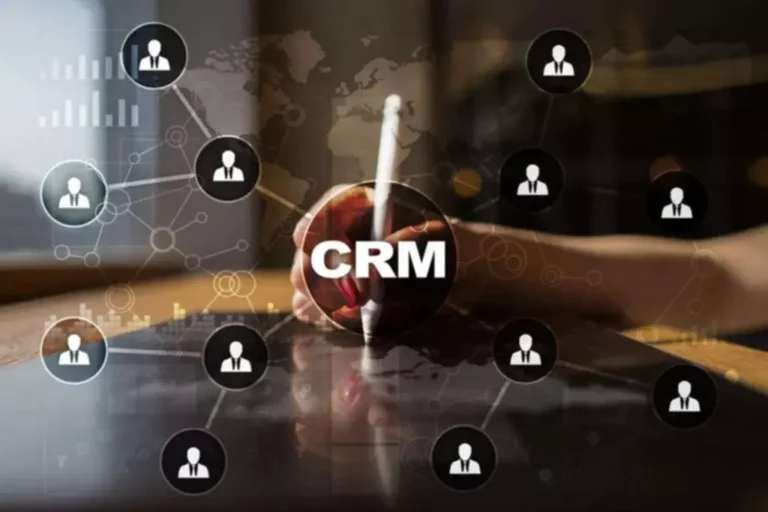Early stakeholder involvement secures help https://www.globalcloudteam.com/ and clarifies migration goals. Efficient communication ensures everyone is on the identical web page, managing consumer expectations and duties. Involving business departments early ensures relevant models are conscious of the results of migration on them.
Specialised migration instruments provide compliance help, helping organizations meet industry-specific regulatory requirements and guaranteeing a easy transition. This follow run identifies potential issues and refines the migration plan. The testing technique should encompass utility stability, integration effectiveness, information integrity, safety controls, and compliance requirements. Preparing for migration entails meticulous planning and monitoring to keep away from unplanned downtime. Creating a check setting is essential for migration testing and ensuring a clean transition. Stress testing the target software assesses underlying processes and data dealing with capabilities, guaranteeing the system handles the expected load.
Whereas the core software might stay the same, this strategy helps optimize the application to work better in the new surroundings. Knowledge loss throughout application migration can occur for varied causes, including incompatible formats of the new and old systems or incomplete transfers. Downtime during migration happens as a result of database crashes, utility bugs, or software errors.

When an utility falls under KPI baselines, IT operations teams can work to identify and rectify the basis reason for the performance issue before prospects are negatively affected. Software migration is performed with the assistance of a quantity of strategies like rehost, replatform, refactor, rearchitect, rebuild and replace. Migrating to extra advanced platforms typically ends in better software efficiency, including quicker processing speeds and lowered latency, leading to an improved user experience. Typically, the aim is to consolidate a quantity of applications right into a single, extra efficient platform. This includes migrating numerous functions, typically from different environments, into a unified system. Widespread types embrace cloud-to-cloud, on-premise-to-cloud, and legacy system-to-modern infrastructure migrations.
Development Process For The Layperson And What Does It Take To Build An Application

On the primary day of migration, your organization should contemplate the method it can test the outcomes of its software migration project to make sure that every thing capabilities appropriately. Application migration is the method of moving a software program from one computing environment to another. Usually, organizations will migrate from an on-premises server to a cloud surroundings, or they may migrate from one supplier to a new cloud provider’s setting. From conducting a thorough evaluation of the current surroundings to optimizing efficiency post-migration, there are tons of factors to assume about. This transition can be easy when you plan out every step and address all major dangers.
Enhanced Accessibility And Flexibility
Software migration is a fancy but important course of for modern businesses seeking to reinforce performance, scalability, and value efficiency. Migrating functions to the cloud can significantly enhance cost effectivity and streamline management via centralized instruments. Typical situations include migrating business-critical apps to cloud platforms like Azure, where the advantages of cloud computing could be absolutely realized. Nonetheless, utility migration is usually complicated as a end result of differences between the original and goal environments and the reality that many migrating apps aren’t designed to be transportable. Rehost, or carry and shift, involves transferring an application from its present surroundings to the cloud with out modification.
Azure Migrate is a Microsoft service that helps to plan, assess, and migrate your workload to Azure. It offers a variety of tools, corresponding to Azure DMS, Internet App Migration Assistant, and Azure Data Box. By using these tools, you’ll have the ability to consider bodily and digital servers and applications and carry out the migration with minimal downtime. An utility may be retired if it no longer serves a major enterprise function or if maintaining it’s expensive. The Replace/Retire method involves discontinuing the support for an utility as an alternative of migrating it. Retiring such an software can release assets whereas changing it with a contemporary software that can higher align with evolving applied sciences.

Migrating Legacy Applications
- To ensure a smooth and successful migration, it’s crucial to have an application migration guidelines in place.
- Organizations undertake different strategies when they migrate applications to the cloud because of underlying technical complexities, computing requirements, and altering enterprise wants.
- A few additional factors to add to your plan are unforeseen prices, budget overruns, and ROI expectations.
- Implementing app migration from step to the stem will ensure a profitable app running on a model new platform and knowledge safety for the product.
- It involves more than simply transferring information; it requires shifting all of the components that keep the appliance working, like databases, configurations, and integrations.
These aren’t the one application migrations practices that you should observe, but they provide a strong starting point. The app you are planning to migrate have specific server wants and dependencies. Hence, it is better if you create an app deployment plan to streamline the method and assist DevOps teams in discovering these necessities. These embody operational flexibility, scalability, price efficiency, compliance ease, access to advanced applied sciences, and enhanced safety and disaster recovery capabilities.
Dangers such as unplanned downtime, compatibility issues, cost overruns, and security issues have to be carefully managed. Evaluating each technical and business risks minimizes potential challenges during migration. Rehosting, commonly known as “Lift and Shift,” includes moving the application as-is from an older surroundings to a newer one. Effectively plan and accelerate your cloud migration initiatives with IBM Turbonomic. Achieve actionable insights into utility workloads, optimize efficiency and save costs whereas guaranteeing seamless cloud transitions. Study tips on how to transition your purposes to the cloud shortly with the raise and shift strategy, retaining your existing infrastructure while gaining cloud advantages.
Right Here, applications are hosted on servers managed by external providers and accessed over the Web. However, it requires dependable web connectivity and belief in exterior suppliers for safety and uptime. Reduce disruption or possible downtime and increase the effectivity of your migration plan by automating repeated patterns whenever attainable. For instance, if your group has chosen to start out small with a phased cloud migration approach, automating certain processes can facilitate future phases. Effective utility migration begins with a radical technical audit, involving an in depth evaluation to understand Prompt Engineering the nature and dependencies of the purposes.
It may be transferring from on-premise to cloud center, from public to personal cloud platforms. This course of can be difficult as many companies use customized software program improvement or specific network architecture. The software program migration wants to ensure the correct transfer of information and its security. Create a check surroundings to rehearse the migration course of earlier than transitioning.



